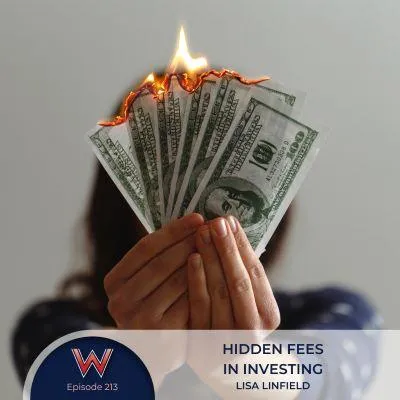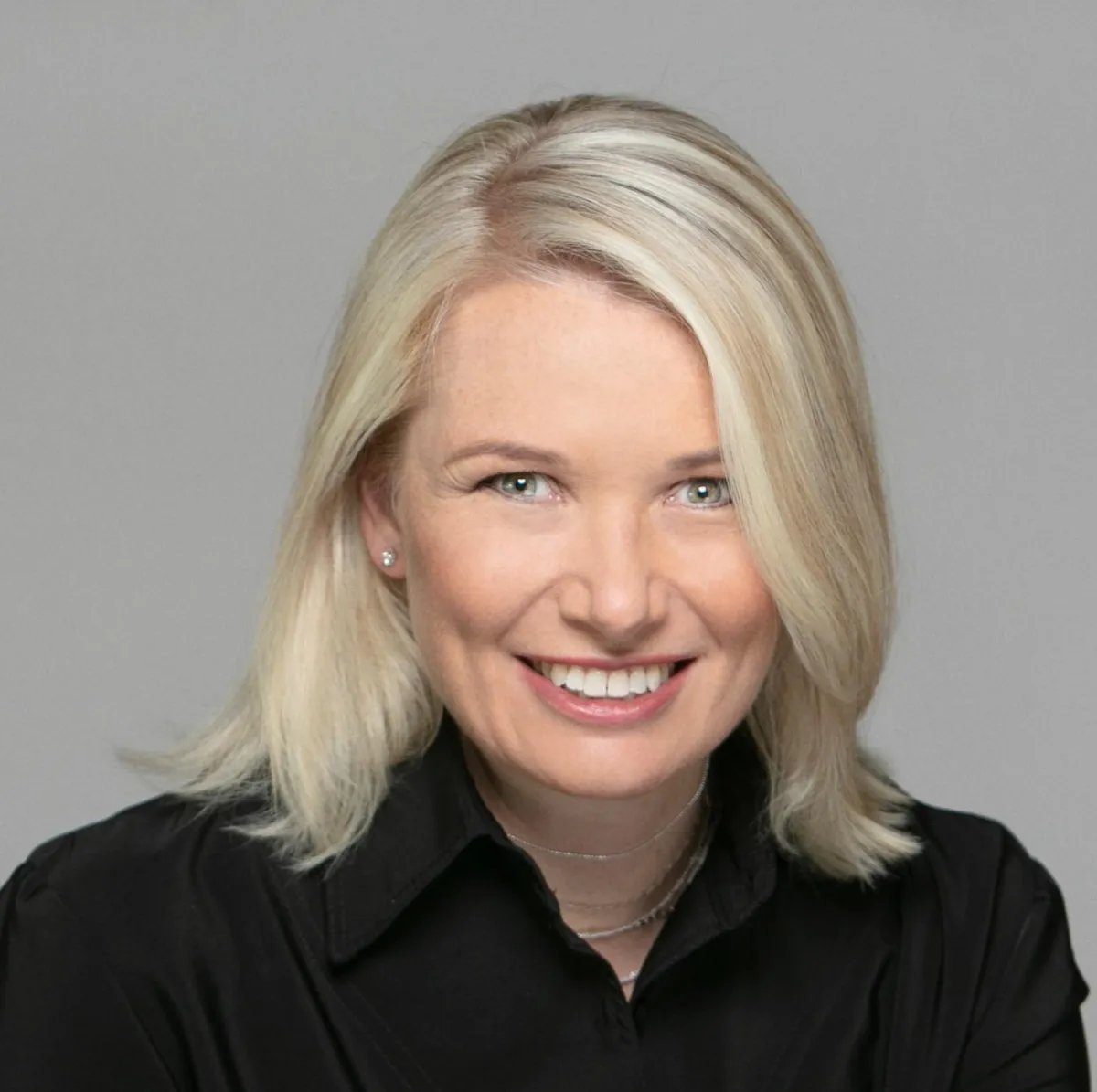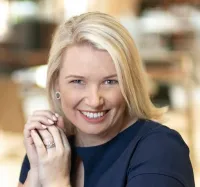Browse for the latest episode of...
working women's wealth

213 How the investment industry hides fees…
With hidden fees that could eat away at your investment growth, have you asked your investment manager about the fees that you're paying on your investments?
In this week's episode are some of the 'tricks' that the industry uses, and how you could LITERALLY have half the money you should have over time if your fees are not up to speed
Show notes:
[01.28] The investment fees landscape.
[05.15] What it means for the fees you pay.
[06.14] Two of the common things that seem to confuse people.
[09.37] All the fees you will pay for investments.
Quotes
"It doesn't matter how great your investments perform, if all the fees that are taken off by all the pieces of the value chain amount to a lot of money, you can end up having very little real growth in your investments." - Lisa Linfield
'The first thing that you need to know about investment fees and understanding your investment fees, is that it is not simple." - Lisa Linfield
"The most important thing is to look at it holistically." - Lisa Linfield
"The total growth number is good, and it's good to know because it's what you're going to retire on." - Lisa Linfield
"Remember to get what you pay for." - Lisa Linfield
"You can LITERALLY have half the money you should have over time (or less) if your fees are not up to speed." - Lisa Linfield
Related posts and episodes
Subscribe to our podcast on iTunes or Spotify
Please do Subscribe to our Podcast on iTunes or Spotify and leave a review. This helps the podcast to rank higher and therefore makes it more visible to others browsing podcasts in the hope they too may benefit from our content.
Get my book - Deep Grooves: Overcoming Patterns that Keep you Stuck
You can get the first two chapters of my book FREE here
If you want a paperback copy and you’re in South Africa, visit my site LisaLinfield.com
If you want a Kindle copy or a paperback anywhere in the world, visit Amazon
TRANSCRIPT
As I said in my book, Deep Grooves, one of the biggest tools I use to listen to God is Synchronicity. When something weaves its way into my life a few times, I start to notice it and realise that God and I are now having a chat on something that’s on his mind for me.
At the moment, there have been a number of times when the issue of investment fees has come up in various different contexts… so I thought it would be a great for us to chat through this one.
Just this year I’ve had a number of people who want to be my clients come to me. Recently, it was a couple in their 70s who have been investing over a very long period of time… unfortunately with the wrong company. When I look at how much their investments have grown, I am horrified. The growth is nothing at a time when the market is growing. BUT, when I model those investments on my software, the actual underlying funds have grown nicely. So why if the investment funds have grown well, has their own money failed to grow?
The answer is fees.
The investment growth has been eaten away by fees.
The first thing you need to know about the investment fees landscape is that IT IS NOT SIMPLE. And the reason why is because it is an industry that is evolving globally… particularly when it comes to retirement funds like pensions, IRAs, retirement annuities etc. and, things like endowments and life insurance based investments.
You see these products started their journey in life insurance businesses – and so come out of an environment where sales people earning large commissions used to broker these products. And because Life Insurance charges and profitability are soooo complicated to understand, it has historically been difficult for regulators to take on the industry. That’s why the rocket scientist actuaries train seven years… because they genuinely are complicated.
So what does that mean for the fees you pay?
Well, there is absolutely a difference between the modern investment companies and those that come from the larger older insurance companies. And like the prospective elderly clients whose investments I was looking at, that difference can be the difference between you being able to retire well, or not – so you REALLY need to understand it.
And why is it important?
Because fees eat away at your growth…. And like you have growth that compounds over time, fees negatively compound over time so the impact grows and grows.
The first thing I want to say about this is, like all industries, it’s a few bad apples that tarnish the industry. My industry is filled with amazing people doing amazing things – and they’re the ones I choose to hang out with. But, there are those companies and individuals who are still stuck in the old way of doing things.
So let’s start at looking at the tricks the industry uses.
1. Showing your growth as a Total percentage and not a per year percentage
One of the ways that we all don’t think to question our fees is that we see the growth as a total percentage from what we invested 10 years ago.
So they say your money has grown 24%. Sounds a lot right?
But when you look at what that was per year, and it’s 1.5% per year, you then stop and go YIKES… I could have got more from the bank!
The Total Growth number is good to know – it’s what you’re going to need to retire, but you can only really know if your investments are growing at the right pace after fees when you look at the annual growth because not many of us are rocket scientist enough to do that mental calculation in our heads!!!!
1. Showing you JUST the adviser fees
All adviser’s belong to a company – whether it is their own or whether it is a big group or a life insurance company.
Most people when considering a new adviser or comparing theirs, look at and compare the ongoing adviser costs ONLY.
I guess that’s what the adviser gets paid, so that’s what they discuss.
But, as you will soon find out, that’s just ONE part of the fees… my elderly client’s adviser was charging them market leading rates, and if that was ALL they were paying, they would be fine.
It is important that your adviser fees are comparable to the market rates… and extremely important that you don’t get charged HUGE one off percentages… but it is just PART of the cost, and sometimes only a small part of the total cost. So know that there are other costs the company the adviser belongs to charge, or the investments and investment technology charges.
One last word on adviser fees – remember you get what you pay for… and remember to get what you pay for. You are paying for an annual review with your adviser at minimum… so make sure you get that. You’ve paying for ongoing reviews of your investments, so make sure that they are scanning the market and changing it. Don’t pay your adviser for years and years, and never see them.
I had a work retirement fund that I moved to an adviser in 2000 when I left that company. I only moved it to my own portfolio in 2015. For 15 years that adviser who saw me once got paid each year from my investments and I never saw him once… sound familiar?
So what are ALL the fees you will pay for investments, and how do you ask your Financial or Investment Adviser to show you them all in a way that means you KNOW you’re going to get all of them disclosed and can fairly compare them between investment providers?
In South Africa, we are lucky as our regulator has made sure that if you ask for your Effective Annual Cost, or EAC, the investment company HAS TO show you everything, including the VAT or tax you pay on it. So write that down, ask your adviser for the EAC or Effective Annual Cost… and ask your investment advisers to send that to you today. You should be paying less than 2% excluding VAT.
BUT, the components are the same around the world.
The first principle you need to know about the investment industry is that it charges its fees, in general as a percentage of the amount you invest….. and the more you invest, the less you pay as a percentage…. Paying 100 on 1000 invested is 10%... but paying 200 on 20000 invested is just 2%. You still pay more in total, but the percentage is less.
1. Administration and IT costs
The investment you own sits on an IT platform somewhere. That IT platform is supported by a team of people that manage the day to day operations of your investment…. Opening the account, making the investments, applying the dividends from the investments into your account as cash you’re paid, or buying more shares.
But here’s the thing…. There isn’t much difference to you which IT platform you’re on. Think of it a bit as a super market shelf… what you want to buy is can of Coke…. In our case, the investment and its performance… you really don’t need to overpay for the shelf!
So the first fee you pay is for administration and IT costs. Those range between 0.1% to as much as 2%
2. Investment management
This is the cost you pay for someone to choose the right mix of shares and bonds in order to get you the best investment growth for your level of risk tolerance.
This fee is almost always not discussed as your investment growth is always reported AFTER this fee… so even if your statement shows the IT and Administration Cost, and the Adviser cost, it doesn’t record the investment management cost as a transaction because the investment manager has already taken it off before it gets to the adviser or the IT system.
It’s important to know that the unit trusts or mutual funds or investment funds have different fee classes – effectively offering bulk discounts to big investment managers. So sometimes you may have two fees here – one that pays for someone who puts all the funds together, and one that pays for the investment funds themselves. Most times, when you put the two together, it’s less than others would pay as the bulk discount has been applied which covers the additional layer of investment selection.
This is the fee that often gets discussed in the debate between active and passive… so it’s an important fee to know.
Competition has meant that US and international funds charge much lower fees than smaller countries such as South Africa… so fees can range between 0.06% for an index or passive fund in the US to 2-3% for an active fund in South Africa.
For share portfolios, often the fees of the Investment Manager and the IT & Administration are mixed together.
3. Sales and Marketing Costs
This is often applied in big companies and old life insurance companies. Just Yesterday I saw a NEW investment, a sale, which had the following marketing and administration platform fees – To me that’s criminal!
4. Adviser Fees
Sometimes Financial Adviser’s will charge you an initial fee for a new investment. Effectively they say the financial plan is for free, but then you get whacked with this initial fee. The challenge is you don’t even realise it as it gets taken off before your investments are invested… so when they talk about the growth, it’s growth after the fee’s taken off, not including that fee. So rather pay a fee for a no strings attached financial plan… it’s worth the totally independent view.
The other Adviser Fee is the ongoing financial advice.
Like the other investment fees, the more you have, the less you pay as a percentage.
These are difficult to judge as to what is fair to pay. You should at least hear from your financial adviser once a year. But also know that the work in between that will ebb and flow. When you’re changing jobs, in financial difficulty, getting divorced, or moving to a new financial adviser, there’s a ton of work. But these things don’t happen all the time…
But make sure that you are at least seeing them once a year, and that they’re able to explain the decisions on your investments in a way that you can understand. If you can’t, find someone who can explain it to you in HumanSpeak.
I recently had a very determined new client insist her investment adviser from a long standing insurance company give her her Effective Annual Cost, or EAC – the breakdown of all her fees. She’d been with the company a long time, and was still going to pay 13.1% in the next year…. You have to have extraordinary investment performance to cover the 13.1%... and the best she would ever get is 4.1%...
Friends, you can LITERALLY have half the money you should have over time if your fees are not up to speed. But as I hope you see now, it’s a LOT more important to see your fees in total than look at the individual fees. If you’re in South Africa, insist on receiving a breakdown of your Effective Annual Cost, or EAC… And if you are anywhere else, insist on getting a breakdown of all your costs line by line.

Explore
On Social
YourBrand.com - All Rights Reserved - Terms & Conditions

